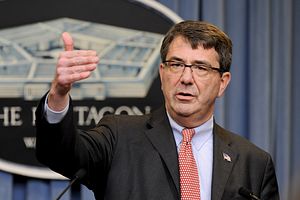The ongoing South China Sea disputes seems to have evolved into a vigorous “stage play.” China does not have much interest in playing a scripted role, but it has been dragged in, little by little.
In a larger sense, this play is less about how China has interrupted other claimant’s incremental occupations of China’s claimed territories, nor how it “defies” international laws or impedes “freedom of navigation,” but more about how a rising China inevitably has been cast as a substantial challenger and rival to the regional order and its creator, the United States. Washington has vowed to defend its predominance anywhere, including the South China Sea, despite the nature of China’s appeals, policies, and activities.
Hence, the territorial disputes between China and its neighbors over islands and rocks at China’s doorstep — and thousands of miles away from America — has evolved into a direct confrontation between the world’s two largest economies. What a bewilderingly strange, and yet utterly predictable, storyline!
The “play scripts” of this show on the stage of the South China Sea seem to embody two main parts: a rehash of the “China threat theory,” and a concerto of “the-smalls-bullying-the-big.”
Given China’s relative disadvantages in international discourse, particularly in the past, the “China threat theory” has been notably rehashed as the same time the South China Sea issue has been widely discussed in the international community. This has further brought the whole region into a type of “Balkanization” – an intentionally fragmented regional situation that involves not only the regional disputants but also “irrelevant parties” as well.
According to this script, the current situation may naturally be described as China acting as a regional “threat” that confronts a group of others, thus “erecting a Great Wall of self-isolation,” as U.S. Secretary of Defense Ashton Carter so memorably put it. This narrative seems to claim that other countries deploying military facilities, “building islands,” or continuously sending military battleships and surveillance aircraft into the South China Sea are less of a threat (or no threat at all), but China’s reactions as dangerous and destabilizing.
The other part of the “script” is actually something that has been overlooked in the international community with regard to the disputes in the South China Sea. In world politics, we may naturally believe that it is quite often the big that bullies the small. This is not true in the South China Sea — some of China’s neighbors (the small) had unilaterally changed their policies and incrementally occupied a large number of islands and rocks, seeing China had been rather self-constrained. This is how the small are actually bullying the big – particularly when China has been intentionally portrayed as a rising threat in the region. By persistently “bullying” China, the chance is that once China responds, regardless of the nature and extent of its reactions, other “irrelevant parties” may find a way to step into the game, and this is exactly what has happened in the South China Sea.
After all, this is simply not a game nor a “play” in which China intends to act out whatever role it is cast in. Nevertheless, it is clear that overall China would not trade its core interests for a “forced” regional order. It certainly does not intend to do so in the South China Sea, now or in the future.

































